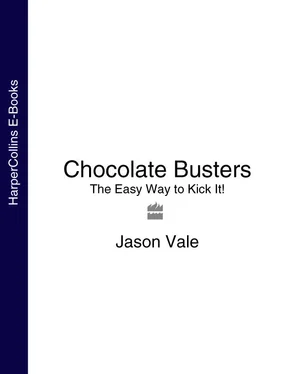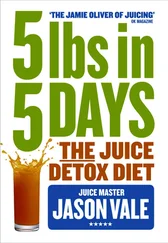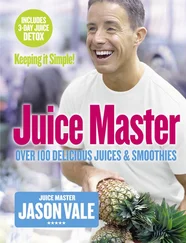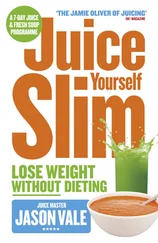THERE’S A WAFER THIN LINE BETWEEN LOVE AND HATE
Everyone and their mother knows that mass-market commercial chocolate is bad for you, you don’t have to be Inspector Morse to work it out, do you? The problem is, although everyone knows that chocolate is bad and fattening, they also strongly believe it’s blooming lovely and has the amazing power to lift our emotions. So what we are dealing with here is what amounts to the ultimate love/hate relationship; the David and Goliath of mental battles. This is why at this stage you will not be entirely sure whether or not you do want to stop eating chocolate altogether. In all probability, you picked up this book to find a way to cut down a little, go on the chocolate wagon for a while – but kick it altogether, like forever? You’ve got to be off your rocker! This is also why I realize at this stage I’m half your friend and half your enemy:
‘Hooray this guy’s going to help me kick chocolate!’ ‘Damn this guy’s going to take away my chocolate … forever – NO WAY!’
It is also why many people who bought the infamous Atkins Diet book only read a small section of it before discarding it to gather dust on the shelf. They were fine up until he pointed out that chocolate was a dreaded carbohydrate and therefore a no-go area. No white bread is fair enough but no chocolate – BOG OFF, ATKINS! Of the millions of Atkins books sold it is estimated that only about 5% of people actually read the whole book and only a small percentage followed it for longer than a week (Jennifer Aniston being one – and don’t we know about it!). This is why if you really want to bust your chocolate love/hate affair, it is essential that you do something that most people who buy books of this nature fail to do – read the whole of the book . Every word has been written for a reason and the book is designed, unlike ‘pointing out the obvious’ methods, to remove this love/hate chocolate tug-of-war by gradually stripping the chocolate industry bare to reveal the truth. Once you see the truth you will find it very hard, if not impossible, to have any desire for chocolate again.
You will notice that in order to achieve this I will be playing the chocolate industry at their own game by repeating certain points over and over again to make certain they stick in your conscious and sub-conscious mind. So if when you’re reading this you come across a similar point or you think ‘He’s said that already’, I know – it’s on purpose! Repetition is the key to their advertising and emotional hooking success and it is also key to unhooking the emotional attachment to chocolate. It’s about time someone used this same approach of repetition to burst the chocolate bubble. Until the chocolate bubble is burst, you’ve got more chance of finding true freedom from chocolate as you have making a cup of hot cocoa using a chocolate kettle!
The fact that you are reading this book tells me you probably already know this and are fully aware that willpower alone isn’t going to cut the cocoa, and lectures on the evils on chocolate are about as helpful as devices such as chocolate patches. (Yes, you haven’t misread, there really are chocolate patches, just like nicotine patches, and I’ll be covering these beauties in depth later!) The idea behind the willpower method is to give yourself a good talking to about chocolate; make a mental list of all the reasons why you shouldn’t have eat it, then take a deep breath and hang on in there until the craving goes away. There is one slight flaw with this approach:
THE CRAVING GETS WORSE!
And this is why the last thing you need is a lecture on the evils of why you shouldn’t eat commercially made chocolate. YOU KNOW THAT! What you need is a full understanding of why you do eat it. You need a simple, yet highly effective approach which will not just allow you to see this stuff in its true light; you also need a unique way of thinking that will allow you to Kick The Chocolate … and be happy about it . After all, anyone can stop eating chocolate and be miserable about it – I pulled that off on many occasions and I’m sure you’ve been pretty good at this yourself in the past; all you need is willpower, determination, positive thinking – oh, and being blooming ratty and miserable to boot!
Let me give you a quick but simple analogy to explain why so many people struggle using this approach. Imagine a house fly trying to get out of a room through a closed window. What chance does it have? Ummm, not a jot. But what if the fly had just returned from a positive thinking fly seminar, would it have a better chance then? Of course not! Physics will tell you that no matter how positive, determined or strong-willed the fly is, it will never break the glass. Equally, I will tell you and your past experiences should tell you also, positive thinking, determination and a strong will is not enough to kick the chocolate – and be happy about it! It is, however, always enough to kick the chocolate – temporarily – and be blooming miserable about it!
What you need is not a pocket full of willpower, a dose of positive thinking or a lecture; all you need is a mind open enough to help remove the many, many layers of conditioning relating to what can only be described as the king of drug foods.
So, without further ado, let us begin our journey into the world of chocolate by stripping off the first layer. I have called chocolate the king of all drug foods, but king wasn’t the title it was first given, in fact the title ‘king’ would almost be an insult. The truth is that from the dawn of time and even today in many societies, chocolate is still widely regarded as …
GLOBAL ORGANIZATION OF DRUG-FOOD SUPPLIERS (G.O.D.S.)
 Michael Jacobson was the first person to coin the phrase ‘junk food’ back in 1972. It rocked the ‘sweet’ world and, just like the tobacco industry, the chocolate industry hit back with claim after claim of why its product wasn’t ‘junk’, but indeed one of the best food sources on the planet (a point I will shatter in depth later). Well, I will agree with them in one respect, commercially made chocolate isn’t junk food at all – no, it’s ‘DRUG FOOD!’ If you think the term ‘junk food’ played havoc with the industry back in 1972, with sweet sales dropping a massive 25%, just imagine what my term of ‘Drug Food’ will do.
Michael Jacobson was the first person to coin the phrase ‘junk food’ back in 1972. It rocked the ‘sweet’ world and, just like the tobacco industry, the chocolate industry hit back with claim after claim of why its product wasn’t ‘junk’, but indeed one of the best food sources on the planet (a point I will shatter in depth later). Well, I will agree with them in one respect, commercially made chocolate isn’t junk food at all – no, it’s ‘DRUG FOOD!’ If you think the term ‘junk food’ played havoc with the industry back in 1972, with sweet sales dropping a massive 25%, just imagine what my term of ‘Drug Food’ will do.
Let’s face facts, chocolate is a massive global business and there is just no way the chocolate industry will let this lie. Please don’t be surprised if you start to see scientific paper after scientific paper being produced ‘proving’ why their product is not addictive (in exactly the same way that tobacco companies did for years). After all, they have a lot which needs protecting. In the United Kingdom alone we spend a whopping £4 billion a year on chocolate. That’s £65 for every man, woman and child, or to put it another way, 312 oz a year or, to really bring it home, over 22 lb of chocolate per head per year! Now bear in mind this is the ‘average’. Many people are consuming far more than this and the figure doesn’t include what we buy from duty free airports and when we are away abroad. An article in the Daily Mail a few years ago ran the headline:
‘WHY I MUST EAT 200 CHOCOLATE BARS A WEEK’
They were referring to Maureen Young, a self-confessed ‘chocoholic’ who ate 200 chocolate bars every week for 6 years. If my calculations are correct that is a cost of over £20,000 in just six years! And that’s just one person. Maureen, although clearly more ‘addicted’ than most, isn’t the only one bringing in massive revenue for the chocolate industry. Even the average chocolate addict will get through a whopping £10,000 on chocolate in their lifetime. That figure shouldn’t really come as any surprise since in Britain at Easter alone we will get through 100 million eggs; that’s nearly two chocolate eggs for every person in Britain – ’Jesus!’ (well, quite). But, as you may have guessed, we don’t lead the world in chocolate consumption, that title is held by the Swiss, who manage just under 28 lbs a year! The US aren’t to be left out either – they spend a staggering $14 billion a year on the dark stuff. M&Ms now rank as the world’s most popular confection bringing in an amazing $2 billion a year. Let me emphasize that in case you just skipped over it, that is:
Читать дальше

 Michael Jacobson was the first person to coin the phrase ‘junk food’ back in 1972. It rocked the ‘sweet’ world and, just like the tobacco industry, the chocolate industry hit back with claim after claim of why its product wasn’t ‘junk’, but indeed one of the best food sources on the planet (a point I will shatter in depth later). Well, I will agree with them in one respect, commercially made chocolate isn’t junk food at all – no, it’s ‘DRUG FOOD!’ If you think the term ‘junk food’ played havoc with the industry back in 1972, with sweet sales dropping a massive 25%, just imagine what my term of ‘Drug Food’ will do.
Michael Jacobson was the first person to coin the phrase ‘junk food’ back in 1972. It rocked the ‘sweet’ world and, just like the tobacco industry, the chocolate industry hit back with claim after claim of why its product wasn’t ‘junk’, but indeed one of the best food sources on the planet (a point I will shatter in depth later). Well, I will agree with them in one respect, commercially made chocolate isn’t junk food at all – no, it’s ‘DRUG FOOD!’ If you think the term ‘junk food’ played havoc with the industry back in 1972, with sweet sales dropping a massive 25%, just imagine what my term of ‘Drug Food’ will do.










